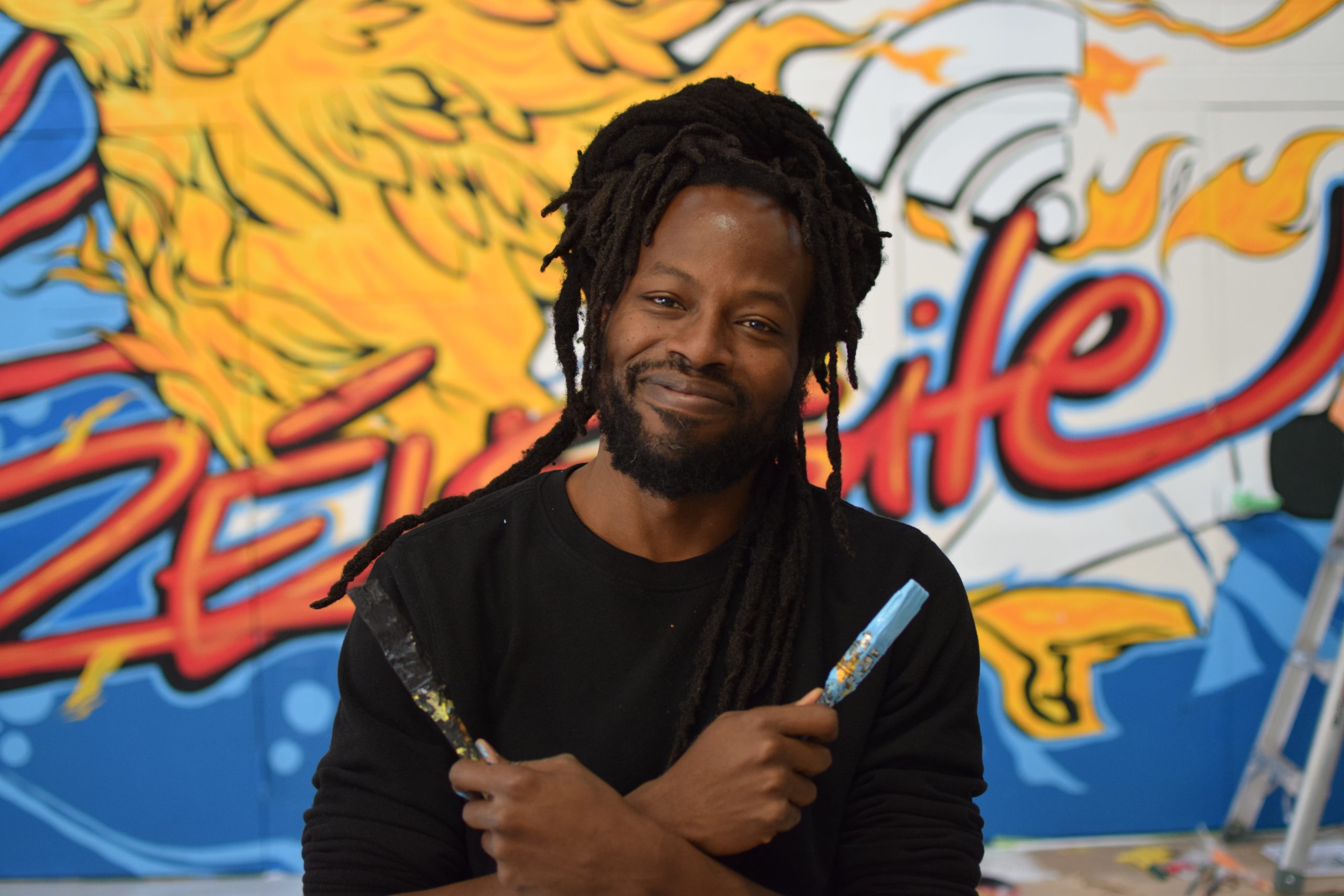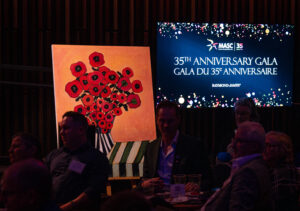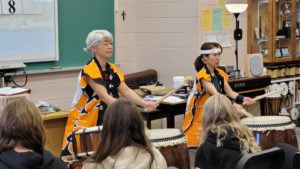Interview: Jimmy Baptiste aims to build a sense of ownership and belonging through his art
By Jessica Ruano | January 5, 2022

This interview was originally published on Apt613.ca
Jimmy Baptiste is a father, youth educator/facilitator, graphic artist, curator, and muralist. With his unique approach to education, he aims to build a sense of ownership and belonging in schools and communities, using murals and graffiti to engage people of all ages in a positive skill-building experience. In this interview, he talks about working in collaboration with other local artists and how his approach to creating art mirrors his approach to life.
Anyone who has walked down Bank Street lately can’t help but have noticed the incredible “We Gon’ Be Alright” mural you created with fellow artists Allan André and Kalkidan Assefa. Can you tell us about the origin of this collaboration?
Kal and I were working on another project together for the Centretown Community Health Centre on Cooper Street when he asked me if I wanted to collaborate on that piece with him and André. We had all painted together previously during the first Black Lives Matter protest last June: a mural in support of the cause at the House of PainT legal wall called “The Resistance Continues.” Since the three of us are Black, these two murals were a way for us to channel all that energy and share it will the community the best way we could, by making art. I would also like to thank the Wallack family, Michael and Morgan and all the employees, who are wonderful people, and everyone who took the time to speak to us while we were working on the mural.
Special shout-out to David D. Pistol, a Black photographer and friend who documented the whole process that week and all the other photographers who came by.

Jimmy Baptiste, Allan André, and Kalkidan Assefa in front of their “We Gon’ Be Alright” mural. Photo: David D. Pistol.
In your biography, you identify yourself first and foremost as a father. What role does parenting play in the art you choose to create and the projects you choose to pursue?
I love my kids because they inspire me every day. They keep me straight! Artistically, they inspire me even more since I have the privilege of sharing all my knowledge and experience with them.
Some people have a negative bias towards graffiti and murals. Where do you think this comes from, and how do you challenge stereotypes in teaching your workshops to youth?
I think that graffiti is an artistic movement that is as important as any other movement before, like art nouveau or surrealism, for example. It represents a style and an aesthetic that is pure to the street. Nowadays we see that corporations are using this type of typography to attract a younger and cool demographic to their products. On the educational side, I’ve been doing graffiti-based art facilitation workshops for the last 17 years now and (unsurprisingly) it has always been a popular program.

A mural in progress. Photo: James Park.
As a member of MASC, what do you gain by offering your workshops in schools and in the community? How has working with students inspired your overall practice?
I explore the bases of typography by exploring self-confidence and creativity through the arts. I always encourage the participants to give themselves a chance to make bold decisions with their artworks and leave some room for mistakes. It’s the best way to learn and that’s why erasers exist! I apply the same philosophy to my everyday life.
Why do you think it is important for our local community to have access to professional artists?
I think it’s very important. Especially in a city like Ottawa where we have access to all these arts organizations. I’ve been living in Wakefield for three years now and every year I discover new aspects of the vibrant and dynamic arts community in the Outaouais and Ottawa.

Creating “The Resistance Continues.” Photo: James Park.
There is tremendous potential that is currently under-exploited to connect these artists with their communities through public art projects that give people the opportunity to reclaim their public space in collaboration with these great artistic and academic institutions — much like what is happening in Toronto with the STEPS initiative and MuralRoutes. This is one of the reasons why I partnered with MASC!
Latest News
View All Articles



